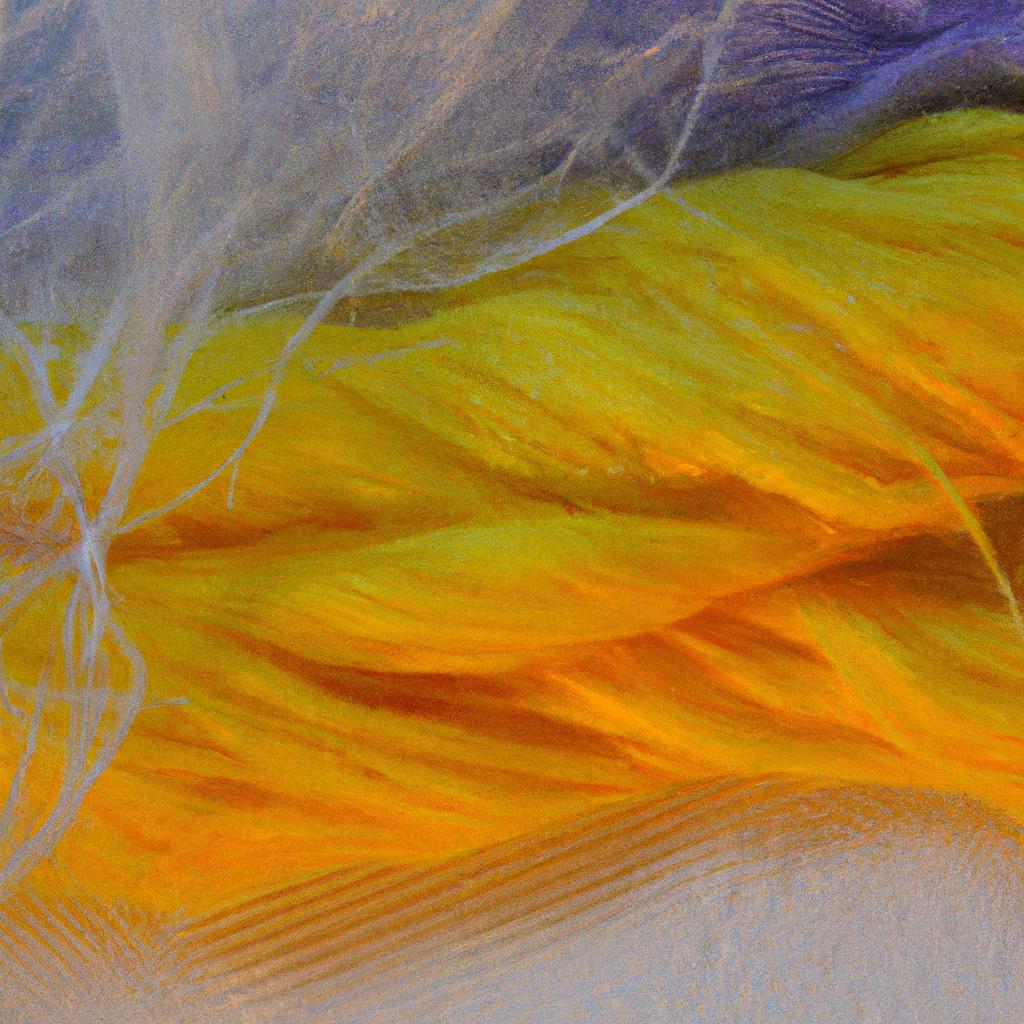If you’re looking for a way to customize your outdoor gear, then dyeing nylon may be the perfect solution.
Yes, you can dye nylon. To achieve the best results, follow these steps:
1. Choose the right dye: Select a dye specifically formulated for synthetic fibers, such as acid dyes or disperse dyes. These dyes ensure proper color absorption and retention on nylon.
2. Prepare the nylon fabric: Wash the nylon item to remove any dirt, grease, or finishes that may interfere with the dyeing process. Make sure the fabric is completely dry before dyeing.
3. Mix the dye: Follow the manufacturer’s instructions to mix the dye with water or a dye carrier, such as white vinegar or citric acid, in a container large enough to accommodate the nylon item.
4. Pre-soak the nylon: Wet the nylon fabric with warm water to ensure even dye absorption. Gently squeeze out excess water, but do not wring the fabric.
5. Dye the nylon: Submerge the nylon item in the dye solution, ensuring it is fully covered. Stir the fabric continuously for even color distribution and to avoid streaks or uneven dyeing.
6. Monitor the dyeing process: Check the color of the nylon periodically to determine if the desired shade has been achieved. The dyeing process can take anywhere from 30 minutes to several hours, depending on the dye type and desired color intensity.
7. Rinse and wash: Once the desired color is achieved, remove the nylon item from the dye solution and rinse it thoroughly with cold water until the water runs clear. Then, wash the fabric with mild detergent to remove any residual dye.
8. Dry the nylon: Allow the dyed nylon to air dry, avoiding direct sunlight to prevent color fading.
Remember that dyeing nylon can be a trial-and-error process, and results may vary depending on the fabric type, dye quality, and dyeing conditions.
Always test a small, inconspicuous area of the fabric before dyeing the entire item.
Not only is it an easy process with amazing results, but it also allows you to express yourself in unique and creative ways.
With this article, we’ll explore how to dye nylon so that you can give any of your items a whole new look!
Whether you’re wanting to spruce up some apparel or add some personal touches to camping equipment, dying nylon is the ideal choice.
The best part? You don’t need any special skills or knowledge – just follow the instructions provided here and you’ll be ready to go.
So let’s get started on our journey towards freedom through self-expression!
Contents
What Is Nylon?
Nylon is like a blank canvas, ready for you to create whatever masterpiece your heart desires.
It’s an incredibly versatile material that can be dyed to bring out the colors of your dreams.

With its diverse dyeing properties and wide variety of types, it’s no wonder why so many people are interested in learning how to safely dye nylon fabric.
There are several different safety precautions one should take when working with any type of dye, but especially when using dyes on nylon fabrics as they can react differently than other fibers.
Additionally, knowing which types of dyes work best on certain types of nylon will help ensure you get the desired color outcome.
There is an array of possible colors available from classic solids to vibrant prints depending on what look you’re going for.
Washing instructions also need to be taken into consideration before beginning any project involving nylon materials in order to achieve success with minimal effort.
With careful planning and research, anyone can produce beautiful results from dying nylon fabric.
What Dyes Can Be Used On Nylon?
Now that we’ve established what nylon is, let’s explore the dyeing techniques for this versatile fabric. With a little preparation, you can use dyes to create unique color combinations and lasting results on your favorite garments.
When selecting colors for dyeing nylon, look for dyes labeled specifically for synthetic fabrics like polyester and acrylics; these are safe to apply directly to your material without additional chemicals or mordants.
As with any project involving chemical substances, practice safety precautions: wear gloves and work in a well-ventilated area.
Before starting, it’s also important to pre-wash your fabric to remove sizing and other residues. Then wash the finished garment separately following all instructions on the dye label.
Time to get creative with some colorful designs!
Steps To Dye Nylon
The next step in dyeing nylon is preparing the fabric. This involves any necessary pre-treating, cleaning and washing to ensure that the fabric absorbs the color evenly when it’s time to dye.
It’s important to select a quality dye and use an appropriate amount of water depending on the type of material being dyed.
Once you’ve chosen your color and prepared the fabric, there are several techniques for actually dyeing nylon. The most common methods include immersion or hand painting with a brush— both can be effective if done correctly.
After dyeing, there may be some post treatments needed, such as heat setting or steaming, to help set the colors and improve their durability.
To make sure your dyed nylon looks great for years to come, follow all recommended fabric maintenance steps like laundering according to instructions included with your specific product.
Now that we know how to successfully apply color to our fabrics, let’s look at what needs to be done after they’re dyed…
Aftercare For Dyed Nylon
Dyed nylon is a great way to add vibrant color and texture to outdoor apparel. It’s like painting the sky with your wardrobe, allowing you to express yourself in a unique way.
But just as an artist takes care of her canvass, proper aftercare for dyed nylon is essential if you want to keep it looking its best!
When machine washing, select a cold-water cycle and use mild detergent specifically formulated for synthetic fabrics. Avoid chlorine bleach or any other harsh chemicals which can damage the fabric’s dye pigments over time.
After washing, heat set the garment by running it through an extra rinse cycle on low heat or air drying outside. For maximum waterproofing protection and long lasting results, spray treated garments with a quality water-repellent finish and let dry thoroughly before wearing them outdoors.
For best results when fabric selection and color blocking pieces together for spectacular effects, choose nylon material that has been pre-treated with DWR (durable water repellant) finishes or has anti-static properties that will absorb less dirt from wear making items easier to clean.
With these simple steps, you can ensure your dyed nylon looks vivid and stays protected against weather elements while keeping your style game strong!
How to Dye a Nylon Tent?
Dyeing a nylon tent can be a bit challenging as nylon is a synthetic fabric and does not absorb dye as natural fibers.

However, it is possible to dye a nylon tent if you follow the correct steps.
Here are the steps to dye a nylon tent:
- Choose the right type of dye: You will need to use a dye that is specifically designed for synthetic fabrics, such as Rit DyeMore Synthetic Fiber Dye. Regular fabric dyes will not work on nylon.
- Clean the tent: Wash the tent thoroughly to remove any dirt or debris that may interfere with the dyeing process. Use a gentle detergent and rinse the tent thoroughly.
- Prepare the dye: Follow the instructions on the dye packet to prepare the dye solution. It is important to mix the dye thoroughly to ensure even color coverage.
- Submerge the tent in the dye: Fill a large container or bathtub with enough hot water to cover the tent completely. Add the prepared dye solution to the water and stir well. Carefully submerge the tent in the dye solution and stir it around to ensure even color coverage.
- Monitor the dyeing process: Check the tent every 10-15 minutes to ensure that it is getting the desired color. Keep in mind that the color will appear darker when the fabric is wet, so it may take some time to get the right shade.
- Rinse the tent: Once you are satisfied with the color, remove the tent from the dye solution and rinse it thoroughly with warm water. Keep rinsing until the water runs clear and all excess dye has been removed.
- Dry the tent: Hang the tent to dry in a well-ventilated area. Do not put it in direct sunlight or use a dryer, as this can damage the fabric.
That’s it! With these steps, you can dye your nylon tent to the desired color.
Frequently Asked Questions
Is It Possible To Reverse The Dyeing Process?
When it comes to reversing the dyeing process of nylon, there are a few different chemical processes that need to be taken into account.
While pre-treatment methods and color selection may not always work, understanding the right substrate preparation techniques along with proper dye selection can help you get back to your original hue in no time!
If freedom is what you’re after, then being informed on these various topics should give you just that.
How Long Does It Take To Dye Nylon?
Dyeing nylon is a great way to add color and vibrancy to your outdoor wardrobe.
Before you get started, it’s important to consider the dyeing temperature, colors available, methods for achieving the desired effect, safety precautions needed and how much preparation will be required.
Depending on these factors, you can expect that dyeing nylon may take anywhere from 30 minutes – 2 hours.
To ensure successful results every time, make sure you stay within the recommended parameters of each step in the process.
With careful attention to detail and quality products, you’ll be able to express yourself outdoors while looking stylish!
Does Dyeing Nylon Require Special Equipment?
If you’re looking to dye nylon fabric, there’s a lot of considerations that must be taken into account before diving in.
Does dyeing nylon require special equipment? Not necessarily! With the right preparation and materials, it is possible to successfully dye your own fabric at home.
You’ll need to consider factors such as color selection, fabric preparation, type of dye used and even how to remove any excess or unwanted dye if necessary.
The most important thing is researching the best technique for achieving success – but with some practice and patience, you can make any adventure outdoors look stylishly unique!
How Many Times Can Nylon Be Dyed?
As an outdoor expert, I know that the number of times a nylon fabric can be dyed depends on the staining method and washing instructions used. The dyeing temperature may also have an effect on how many times it can be coloured.
Nylon is quite versatile when it comes to dyeing techniques, so there are plenty of colour options available for you to explore in order to make your look unique.
Knowing this gives you freedom – freedom to express yourself through fashion without worrying about damaging your clothes!
Is There A Difference Between Dyeing Nylon Fabric And Nylon Yarn?
While hand dyeing nylon fabric and yarn is possible, each material may require different methods.
To achieve the best results with long-lasting color fastness, it’s important to consider factors like stain resistance when choosing a method such as vat dyeing or using a dye bath.
As an outdoor expert, I can assure you that with the right technique and preparation, your nylon fabric or yarn will be transformed for years of adventuring in style.
Conclusion
It’s possible to dye nylon, but you need to know what you’re doing. Reversing the dying process is usually not an option, and it can take several hours for the fabric or yarn to be fully dyed. Special equipment may also be necessary in order to get the job done properly.
On average, nylon can only be dyed up to four times before it becomes damaged beyond repair – this statistic alone should make anyone think twice about attempting a DIY project with this material!
It’s worth noting that there are some differences between dyeing nylon fabric and yarn, so keep that in mind when deciding which type of project you’d like to tackle.
As an outdoor expert, I strongly recommend consulting a professional if you plan on dyeing nylon fabrics or yarns. It might cost more upfront than going at it yourself, but it will save time and money in the long run by ensuring your materials last longer without damage.




